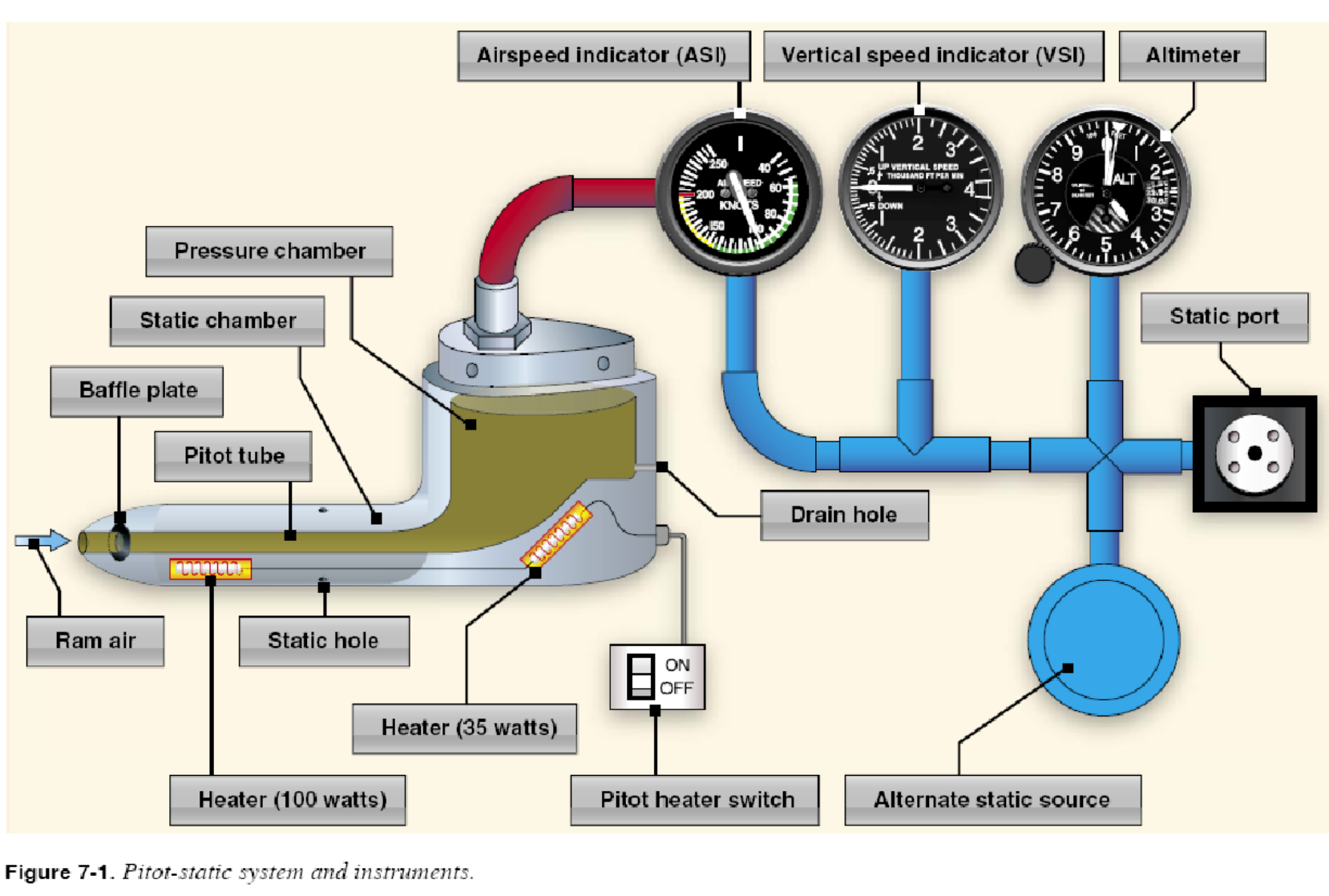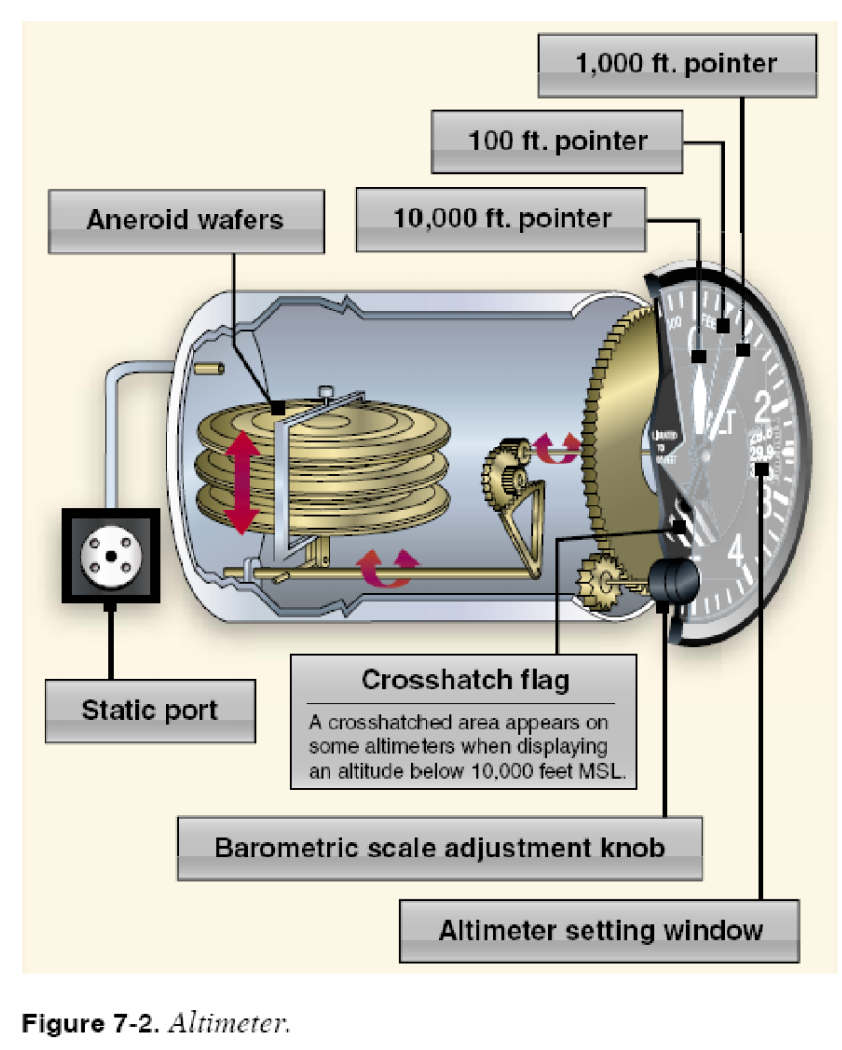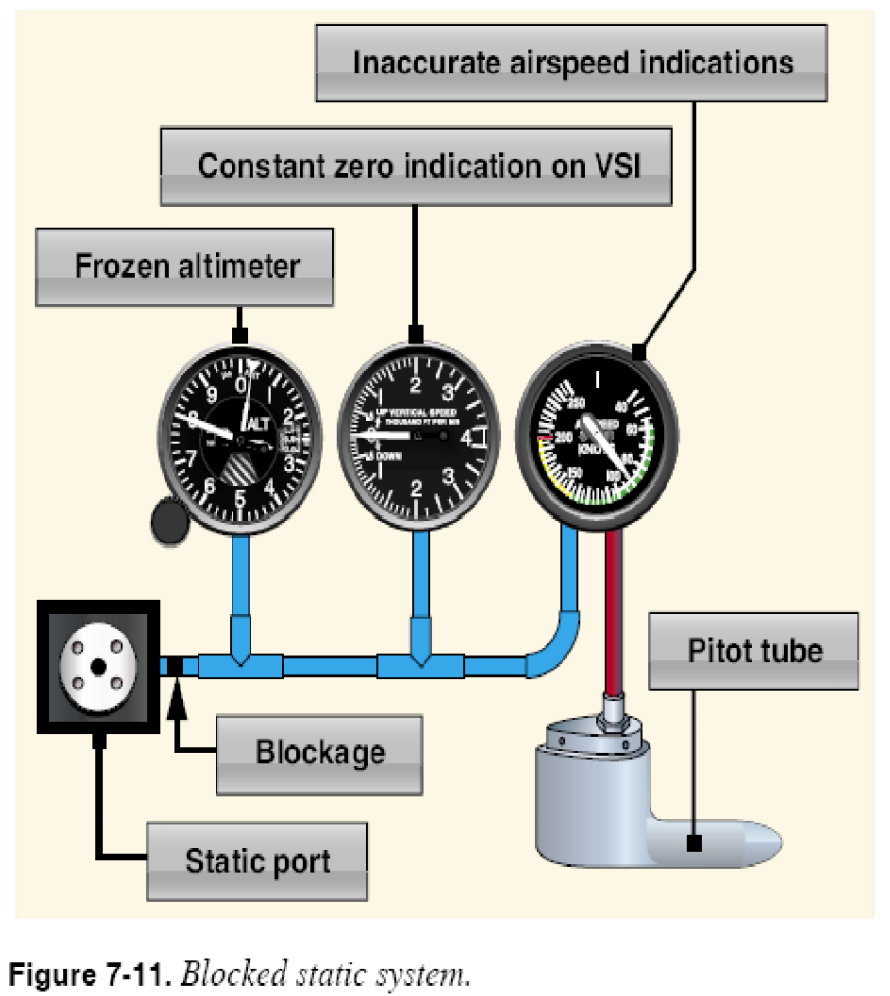Task III.C - Operation of Systems 9 - Pitot/Static
Lesson Overview
- Objective
-
The student should develop knowledge of the elements related to the function of the pitot / static instruments, and vacuum pressure instruments.
- Reference
-
-
PHAK Chapter 8-1
-
- Elements
-
-
Overview
-
Pitot-static instruments
-
Gyroscopic instruments
-
Magnetic instrument
-
- Equipment
-
-
Whiteboard
-
References
-
Diagram
-
Visual Aid (Six Pack, or picture of Piper Warrior flightdeck)
-
- Schedule
-
-
Discuss objectives
-
Review material
-
Development
-
Conclusion
-
- Instructor Actions
-
-
Discuss lesson objectives with student
-
Present the lecture
-
Answer questions the student has
-
Question the student to verify knowledge and note taking
-
Assign certain areas to focus on for homework
-
- Student Actions
-
-
Listen to presentation
-
Take notes on the lesson
-
Ask questions if further explanation is needed or just curious
-
- Completion Standards
-
When the student exhibits knowledge relating to flight instruments including their failure symptoms.
Instructor Notes
- Attention
-
Bring in six pack (soda, not beer =) ), see if students can name aviation sixpack from left to right, top to bottom, what the instruments are in order. Then random.Only get the soda once they get it right.
- What
-
Six Pack
- Why
-
This is how we interpret what the plane is doing, while hurdling through 3D space.
Lesson Details
We’re going to touch on all of the instruments (airspeed, attitude, altimeter, turn coordinator, heading, and vertical speed indicators). How the instruments are interpreted. Which instruments run on which systems, e.g. airspeed is a pitot instrument. How the systems work and deliver information.Recognizing common instrument errors. The benefits of having instruments on separate systems when one system fails.
Pitot-static System

-
Pitot-Static
-
Pitot pressure is measured on the leading edge of a calibrated probe below the left wing
-
Airspeed indicating error, refer to Chapter 5 of POH
-
-
Static pressure is measured by the same probe
-
Error of the static pressure system is negligible
-
-
Instruments
-
Airspeed Indicator
-
Pitot Pressure (Ram Air Pressure) and Static Pressure
-
Dynamic and static pressure differential
-
-
Ram air enters pitot tube, goes directly into an aneroid wafer
-
Static (ambient) pressure fills the interior chamber with atmospheric pressure
-
The aneroid expands or compresses which moves gears to give a reading on the indicator face
-
-
Altimeter
-

-
Static Pressure
-
Wafers sealed at Standard Pressure of 29.92`" Hg
-
Adjust altimeter setting in Kollsman Window
-
1`"Hg = 1,000 ft
-
Set to field elevation if no setting available
-
-
Rate of Climb Indicator
-
Static Pressure
-
-
-
-
Vacuum Pressure (Gyros)
-
Instruments
-
Heading Indicator
-
Attitude Indicator
-
-
Note: The training Aircraft has electric heading and attitude indicators, there is no Vacuum systems in the PA-28-151 we’re training in.
-
-
Electrically Driven Instruments
-
Turn Coordinator
-
Electric Attitude Indicator
-
Errors
-
Blocked pitot
-
If ram is blocked, ram pressure bleeds out the ram drain, the pressures inside the ASI equalizes and the airspeed indicator will read zero.
-
Possible solution: Turn pitot heat on
-
-
ASI Frozen at constant altitude (ASI acts as an altimeter)
-
A climb will show an increased airspeed
-
Descent will show decreased airspeed
-
Potentially very dangerous!! Why? What should happen as you climb? Descend? Can lead to stall and/or in-flight breakup.
-
-
Blocked Pitot Static
-
ASI continues to operate, but incorrectly
-
Behaves somewhat as an altimeter
-
VSI reads zero
-
Altimeter frozen at altitude where blockage occurred
-
Possible solution: Try alternate static source, mechanical, or break face of VSI

-
Conclusion
A review of the pitot-static will absolutely come up in the checkride, but more importantly you need to know it and know how to debug problems to be a safe pilot.
ACS Requirements
To determine that the applicant exhibits instructional knowledge of the elements of principles of flight by describing:
-
Primary and secondary flight controls
-
Trim
-
Powerplant and propeller
-
Landing gear
-
Fuel, oil, and hydraulic
-
Electrical
-
Avionics including autopilot
-
Pitot static, vacuum/pressure and associated instruments
-
Environmental